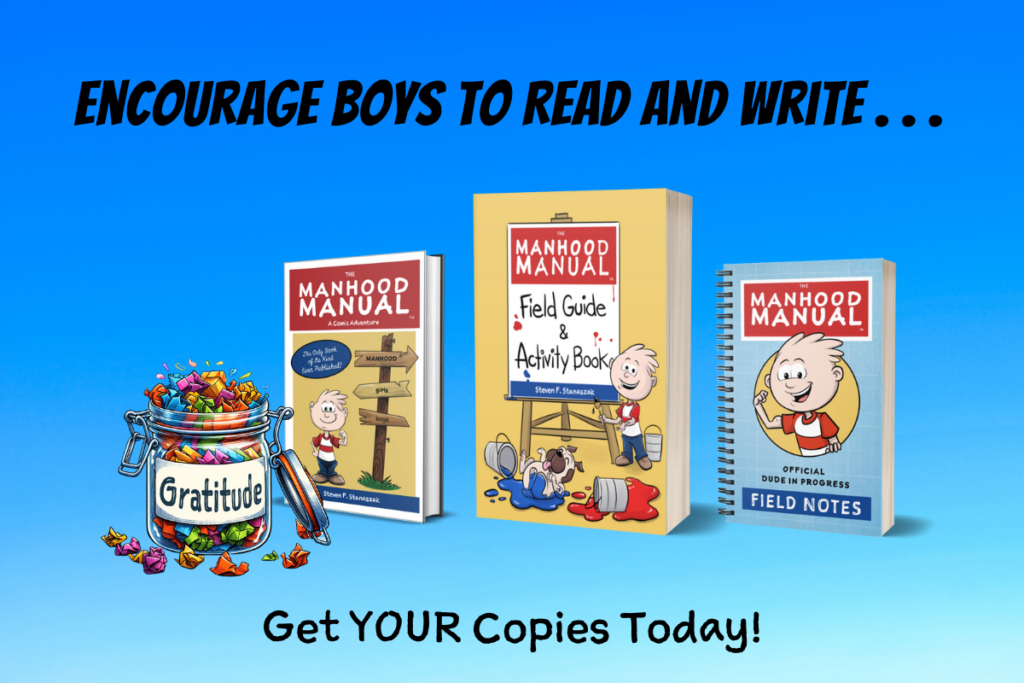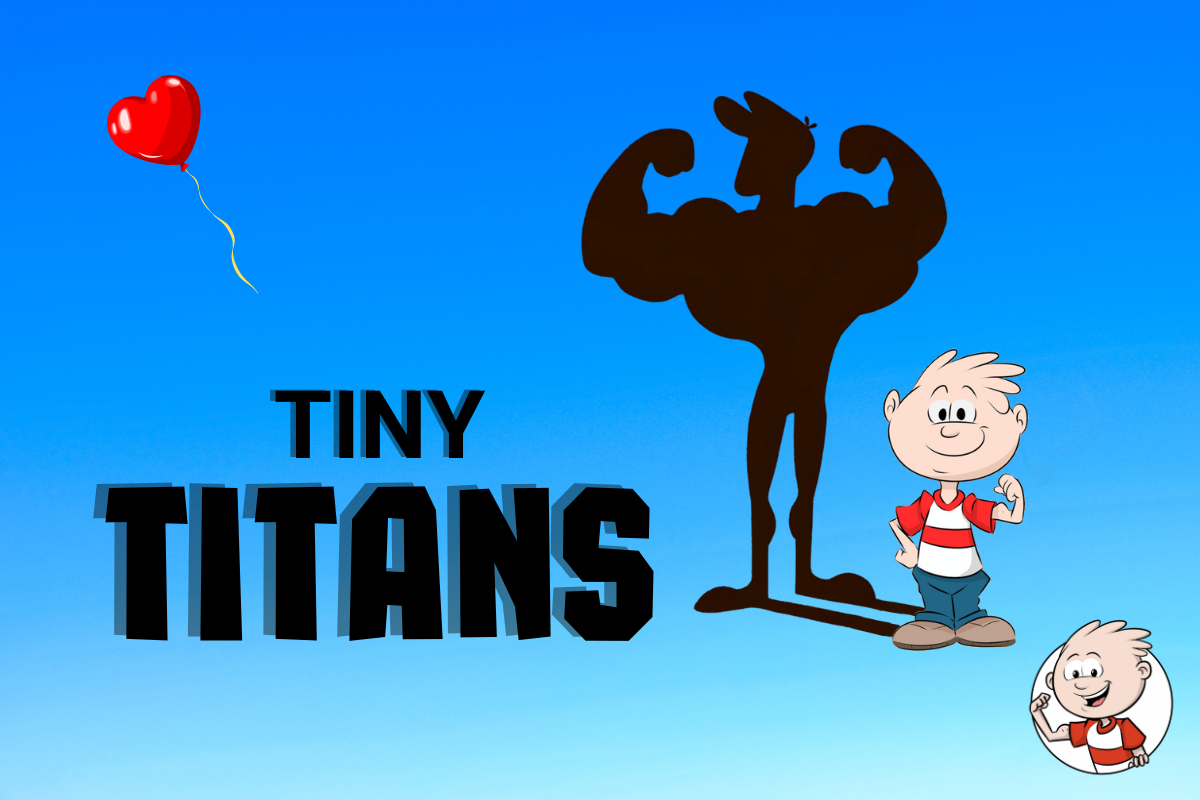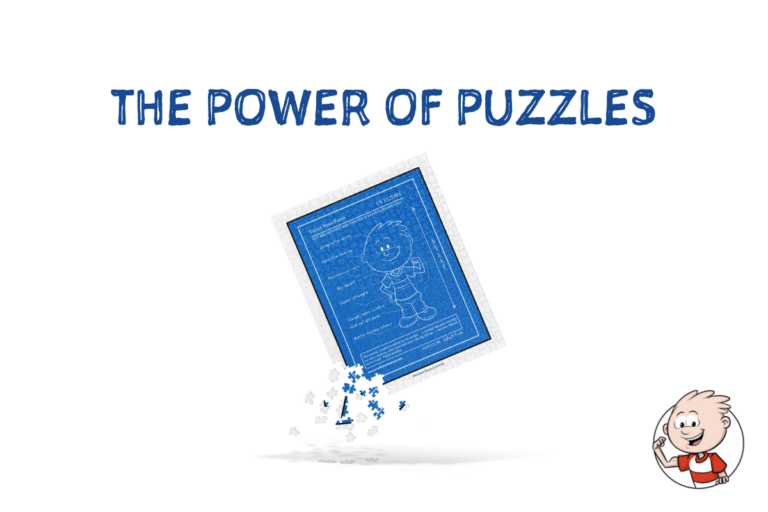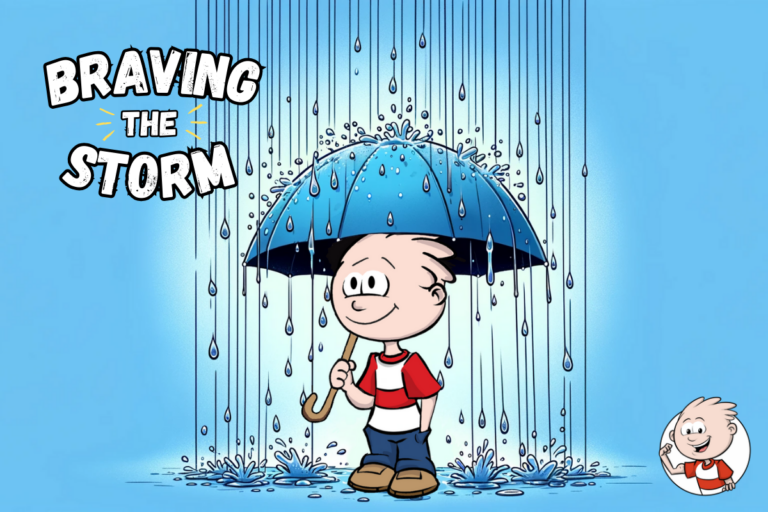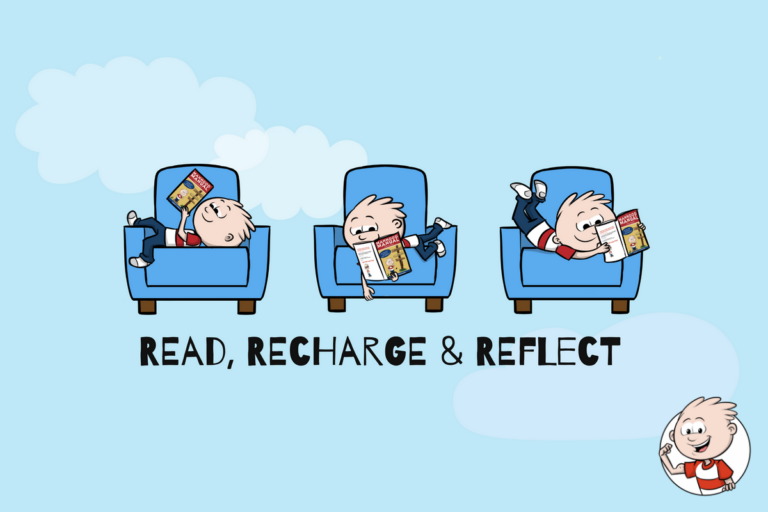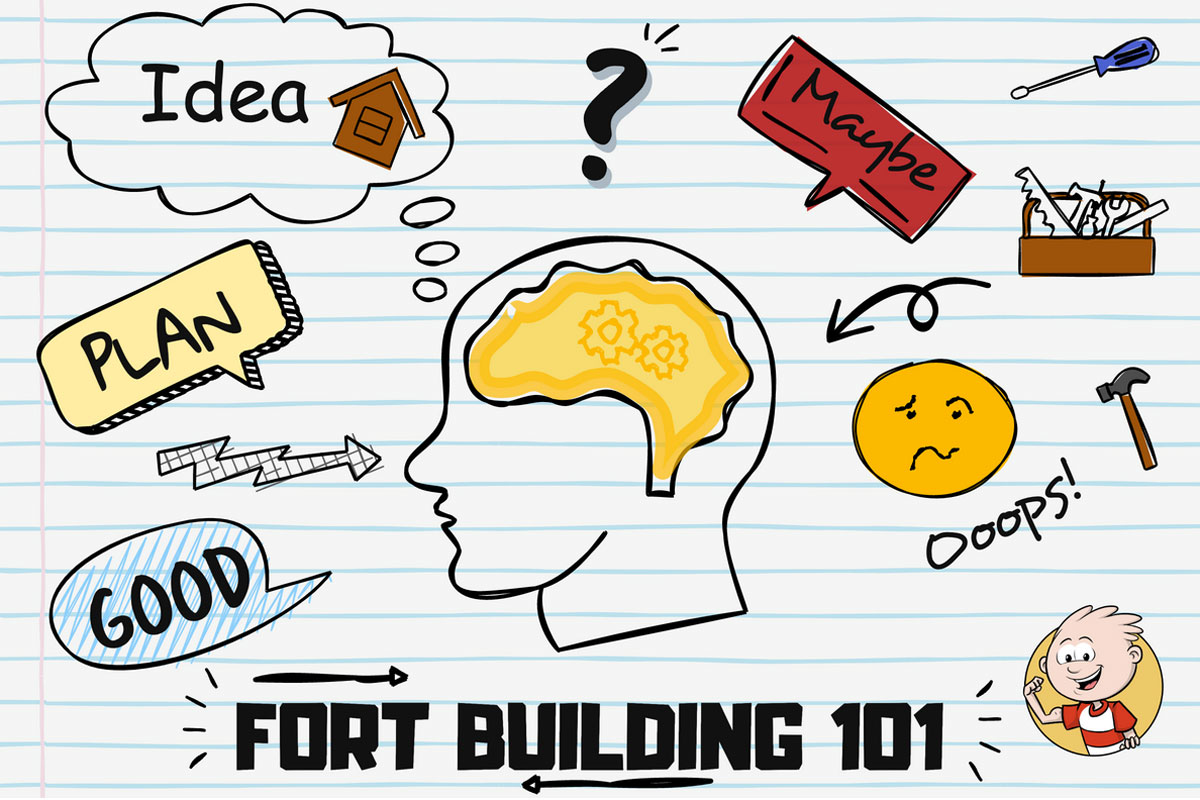Tiny Titans
TRANSFORMING Boys INTO BIG-HEARTED MEN
Inspired by The Manhood Manual book series, our e-newsletter brings parents and educators a blend of fun stories, challenges, and growth lessons for boys on their path to manhood. Expect a COOL IDEA for engaging learning, a BIG PROBLEM to ponder about growing up, and a LESSON LEARNED to help build remarkable boys.
Welcome to a special Valentine’s Day edition of The Manhood Minute. Just like Cupid’s arrow aims to bring people together, this month, we’re aiming to unite the hearts of our young men with lessons of gratitude and empathy. In the spirit of Valentine’s Day, we’re unwrapping the Gratitude Jar, a simple yet heartfelt activity that teaches our boys to count the blessings in their lives.

Alongside, we dive into the world of empathy – the art of tuning into other people’s hearts. We’re all about helping our tiny titans grow into their big hearts. Let’s spread love this month, one lesson at a time.
THE COOL IDEA
Join us in a fun activity that’s brimming with positive energy: The Gratitude Jar. This straightforward and impactful project is an excellent way to encourage children to embrace gratitude and mindfulness.
What You Need:
- A clean, empty jar of any size
- Paper strips or sticky notes
- Pens or markers for writing
- Decorations like stickers, paint, or ribbons
Setting up the The Gratitude Jar:
1. Jar Decoration: Start by decorating the jar with your child. This is more than just a fun arts and crafts activity; it sets the foundation for what the jar symbolizes. Whether it’s with paint, stickers, or ribbons, make it a special experience.
2. Daily Gratitude Practice: Each day, encourage your child to think of something they’re grateful for. It’s a simple yet effective way to cultivate a habit of appreciating the positive aspects of their life. These moments of reflection are fundamental to developing a mindset of gratitude.
3. Write and Collect: Next, have your child write or draw their thoughts on paper strips and place them in the jar. This step is adaptable for kids of all ages – younger ones can draw or write simple words, while older children can pen more detailed expressions of gratitude.
4. Observe the Growth: Over time, you’ll notice the jar filling up with these pieces of gratitude. Each note represents a unique thought or feeling, visually demonstrating the accumulation of all the things your child finds joy and appreciation in.
5. Sharing Moments: Once the jar is full, make time to sit down and read through the notes together. This is a moment for both of you to connect and reflect on the positive things in life. It’s an opportunity for meaningful conversation and a deeper understanding of what your child values and appreciates.
The Gratitude Jar is more than a craft project. You’re also building a stash of positive thoughts and moments that can be revisited and cherished. It’s a tangible way to reinforce the concepts of gratitude and mindfulness in your child’s daily life. As the jar fills up, it becomes a physical reminder of all the good things, big and small, fostering a positive outlook. On days that are challenging, the jar serves as a visual reminder of the many things to be thankful for, helping to shift focus and lift spirits. This activity not only brings fun into your daily routine but also instills valuable life lessons in gratitude and appreciation.
THE BIG PROBLEM
In our fast-paced world, one of the significant challenges we face as parents and educators is nurturing empathy in children, particularly boys. This issue is thoughtfully addressed in two insightful books: “UnSelfie” by Michele Borba and “The Mindful Child” by Susan Kaiser Greenland.
Michele Borba’s “UnSelfie” explores the critical role of empathy in what she terms an ‘all-about-me’ culture. Borba stresses that empathy is a crucial trait, not merely a nice-to-have one. She points out that empathetic children are better equipped to succeed in an increasingly global and interconnected world. The book provides practical strategies to counteract the current empathy crisis among youth, promoting emotional literacy, perspective-taking, and moral courage.
Susan Kaiser Greenland, in “The Mindful Child,” advocates for integrating mindfulness into the everyday lives of children. Mindfulness – the practice of being fully present and aware without judgment – is an effective tool in developing empathy. Greenland proposes simple yet effective activities that help children become more in tune with their own feelings and the feelings of others. These practices, like mindful breathing and attentive listening, not only bring calmness but also foster an understanding of different perspectives and emotions.
Both authors agree that empathy is a learned skill, not something we are born with. This understanding underscores the vital role of parents and mentors in modeling empathetic behavior, providing opportunities for children to practice empathy, and emphasizing its importance in everyday life.
We can start by encouraging boys to openly express their emotions, teaching them to recognize and respect the feelings of others, and engaging them in cooperative activities that require understanding and teamwork. Our ultimate aim is to cultivate a generation that not only values, but actively exhibits empathy.
References:
THE LESSON LEARNED
In the spirit of Valentine’s Day, this month’s Manhood Minute has been like crafting the perfect heartfelt card, only instead of paper and glitter, we’ve used the Gratitude Jar. By sprinkling bits of kindness and appreciation into a jar, we are fostering a habit of seeing life through a lens of gratitude – much like writing a love letter to the everyday joys. Looking to fast-track this into action? Well, of course you can order one. Check out the Gratitude Jar Art Set with everything you need!
Along with making our Gratitude Jar, we’ve also been learning about empathy, taking cues from books like “Unselfie” and “The Mindful Child.” And here’s the Valentine’s twist: as gratitude fills our jars, empathy fills our hearts. These are the twin hallmarks of emotional intelligence. Encouraging gratitude in our children is like sending them a Valentine, inviting them to open their growing hearts to empathy and compassion.
As mentors of these young hearts, we’re aiming to nurture these values. Our goal? To raise a generation that not only cherishes the sweet moments of life, but also resonates with the feelings of others. Let’s continue to craft these heart-filled lessons, guiding our tiny titans to grow into compassionate, empathetic individuals, one Valentine’s moment at a time.
Invest a minute and inspire a lifetime . . .
